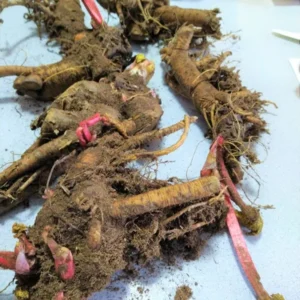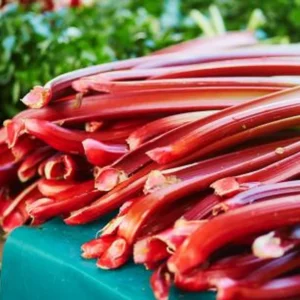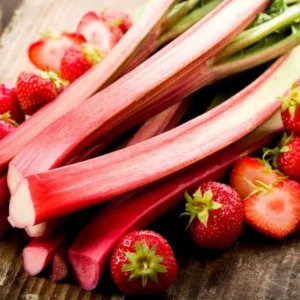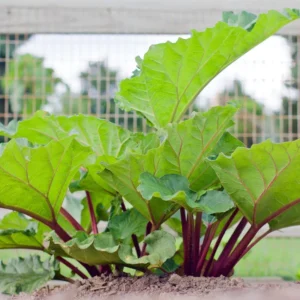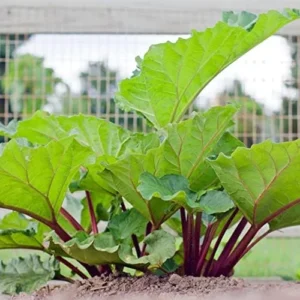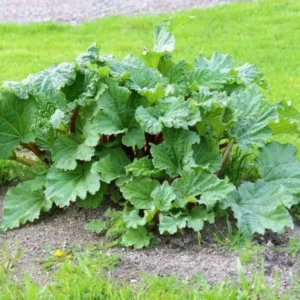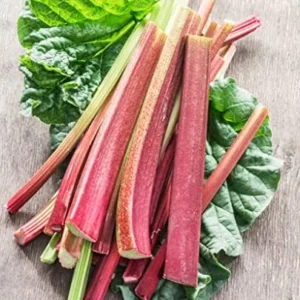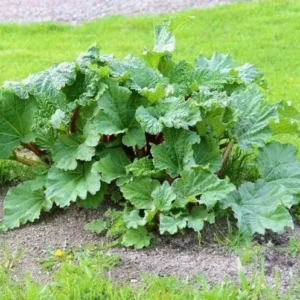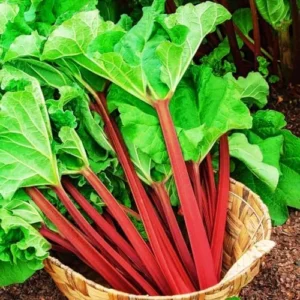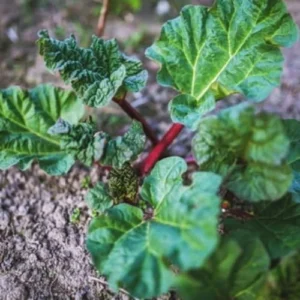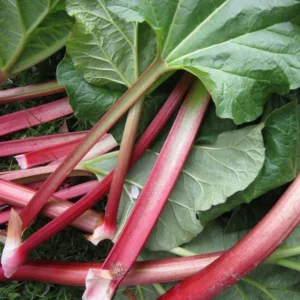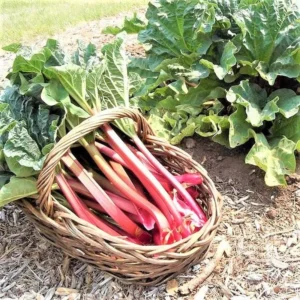Rhubarb is a perennial plant that can produce a bountiful harvest year after year, but to ensure healthy growth and maximum yields, it’s important to know how and when to split your rhubarb plants. Many gardeners overlook this crucial step, leading to plants that become overcrowded and less productive. If you’re here because you’re wondering about the best time to divide your rhubarb, or how to properly carry out the process, you’re in the right place.
In this guide, we’ll walk through everything you need to know about dividing rhubarb crowns, the tools you’ll need, and how to give your plants the best chance to thrive after the split.
Read more: Growing Red Rhubarb Plants: A Complete Guide for Gardeners
Why Split Rhubarb Plants?
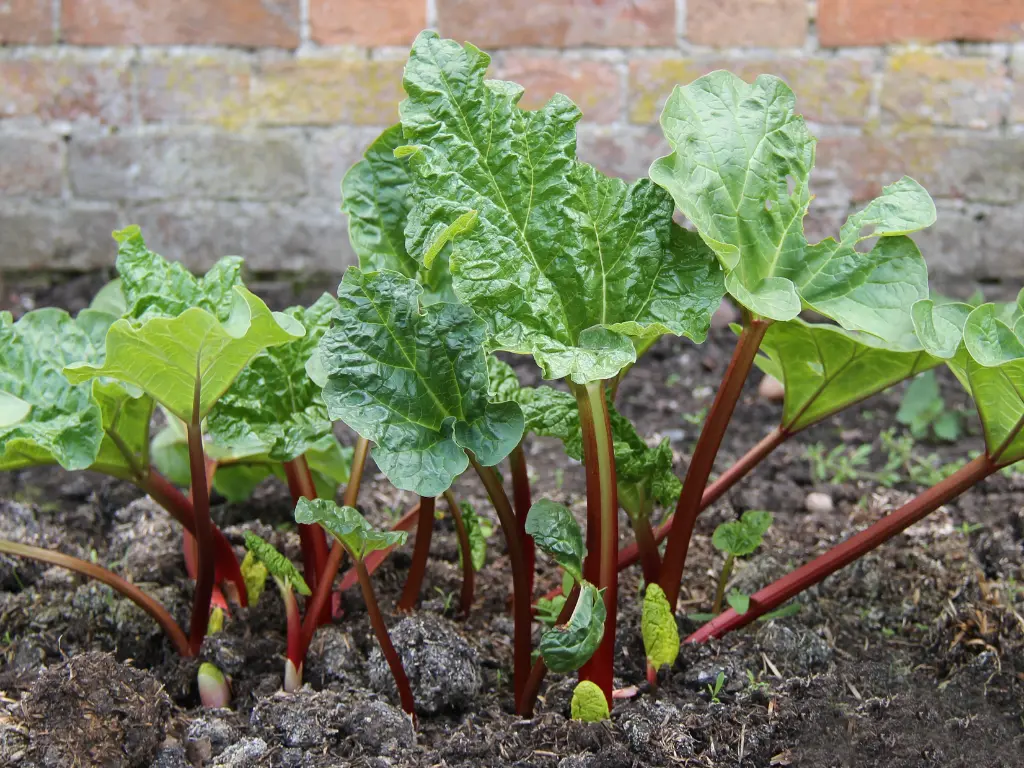
Splitting your rhubarb plants offers several benefits. Over time, rhubarb crowns (the part of the plant that produces the edible stalks) can become overcrowded, leading to smaller stalks and a decrease in overall plant health.
Dividing your rhubarb allows you to rejuvenate the plant, improve its growth, and increase the likelihood of a larger, healthier harvest.
The division process can also help you propagate new plants. By splitting a mature rhubarb crown, you can multiply your garden’s rhubarb supply or share it with friends and family. It’s an easy way to get more of this delicious, tart plant in your garden.
Best Time to Split Rhubarb Plants
Timing is everything when it comes to splitting rhubarb. If you split your plants at the wrong time, you risk damaging them or hindering their growth. So, when is the best time to divide your rhubarb?
-
Early Spring: The best time to divide your rhubarb is early in the spring, just before the plant starts to put out new growth. This is the period when rhubarb plants are still dormant but the soil is starting to warm up. Dividing the crowns during this time gives them the entire growing season to establish new roots and start producing new growth.
-
Fall (Late Autumn): If you miss the early spring window, late autumn can also be a good time to divide rhubarb, after the plant has finished its growing cycle for the year. This allows the divided sections to establish roots over the winter and get off to a strong start in the spring.
Avoid dividing your rhubarb during the growing season, as this can stress the plant and stunt its development.
Splitting Rhubarb Plants
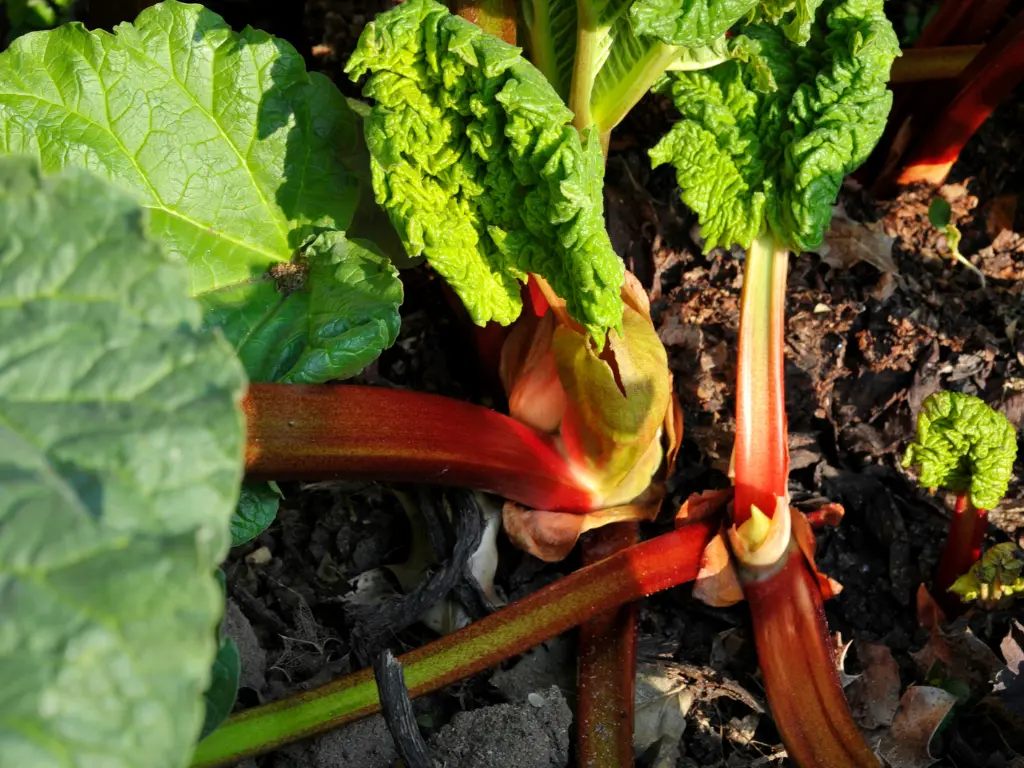
Splitting rhubarb is a relatively simple process, but it requires some care and the right tools. Here’s how to do it:
Tools You’ll Need:
-
Sharp garden knife or pruning shears: To cut through the rhubarb crown cleanly.
-
Garden fork or spade: To gently lift the plant out of the soil.
-
Gardening gloves: To protect your hands from thorns or sharp tools.
-
Watering can: To keep the new divisions hydrated.
How to Split Rhubarb Plants
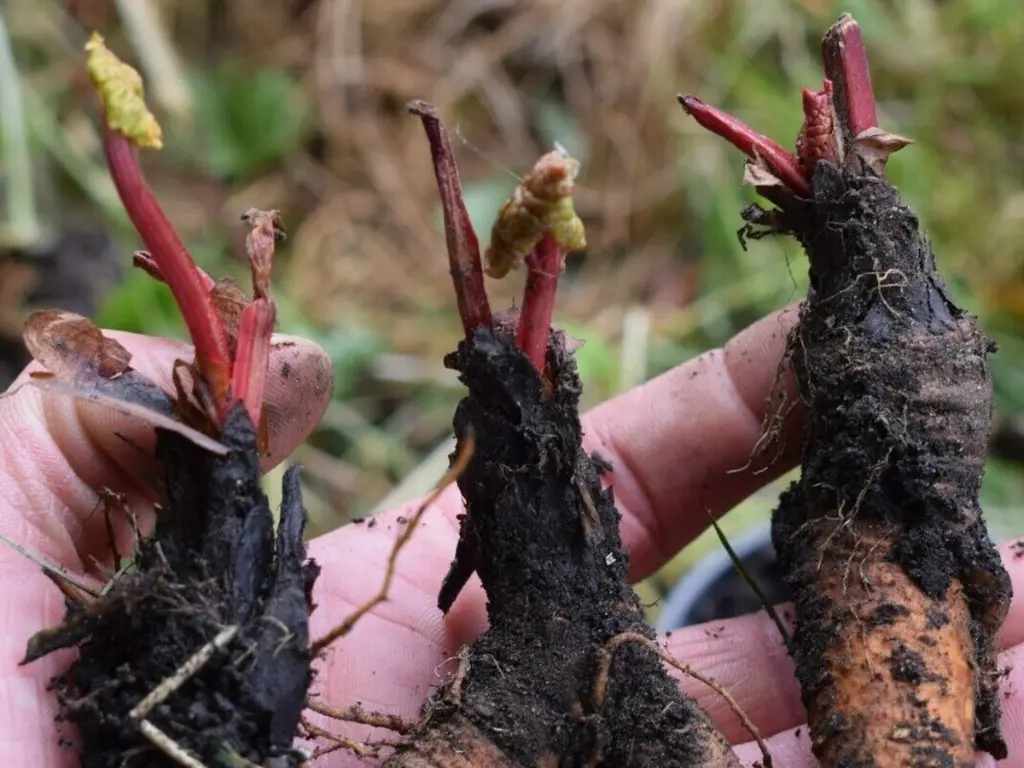
-
Prepare the Area: Before you begin, prepare the new planting sites for your divided rhubarb. Ensure that the soil is rich in organic matter and has good drainage. Choose a location that receives full sunlight for at least six hours a day.
-
Dig Up the Rhubarb: Use a garden fork or spade to dig around the rhubarb crown. Be careful not to damage the roots as you lift the plant out of the soil.
-
Inspect the Plant: Once you’ve lifted the crown, examine it carefully. Rhubarb crowns typically consist of a cluster of thick, knobby roots with buds (called “eyes”) where new shoots grow. Each division should contain at least one healthy bud and some roots.
-
Divide the Crown: Use a sharp knife or pruning shears to cut the crown into sections. Aim for divisions that are about 4-6 inches across, ensuring that each piece has at least one “eye” and some attached roots.
How to Replant Rhubarbs
Once you’ve divided the rhubarb crowns, it’s crucial to replant them as soon as possible. The earlier in the spring, the better, as this provides a longer growing season for the plants to establish their roots. Planting early also ensures that the rhubarb has not yet begun to sprout significantly, which makes transplanting less stressful.
If you’re unable to replant immediately, you can temporarily store the rhizomes (the root system) wrapped in a damp paper towel. Keep them in a cool, dark place until you’re ready to replant. This helps prevent them from drying out and ensures that the rhizomes remain viable for replanting.
Once you’ve prepared the soil and planting space, it’s time to replant the divided rhubarb crowns. Here’s how to do it:
- Place the Rhubarb in the Hole: Position each divided rhubarb cutting with the roots and rhizomes facing downward. The crown (the part where the shoots emerge) should be just below the surface of the soil.
- Cover with Soil: After placing the rhubarb cutting into the hole, cover the roots and rhizomes with at least one inch (2-3 cm) of soil. Gently tamp down the soil to remove any air pockets that could hinder root establishment.
- Add Mulch: After planting, cover the area around the plant with a layer of straw or dried grass. This helps to retain moisture, suppress weeds, and protect the roots from temperature fluctuations.
- Water Thoroughly: After replanting, give your rhubarb a generous amount of water to help settle the soil around the roots and ensure they are well-hydrated. This will help the plant adjust to its new environment.
After replanting, you should expect to see new shoots emerging from the ground within 2 to 3 months. This indicates that your rhubarb is taking root and starting to establish itself in the new soil. The first year after transplanting should be focused on allowing the plant to grow and strengthen, so it’s best to avoid harvesting any rhubarb during this time.
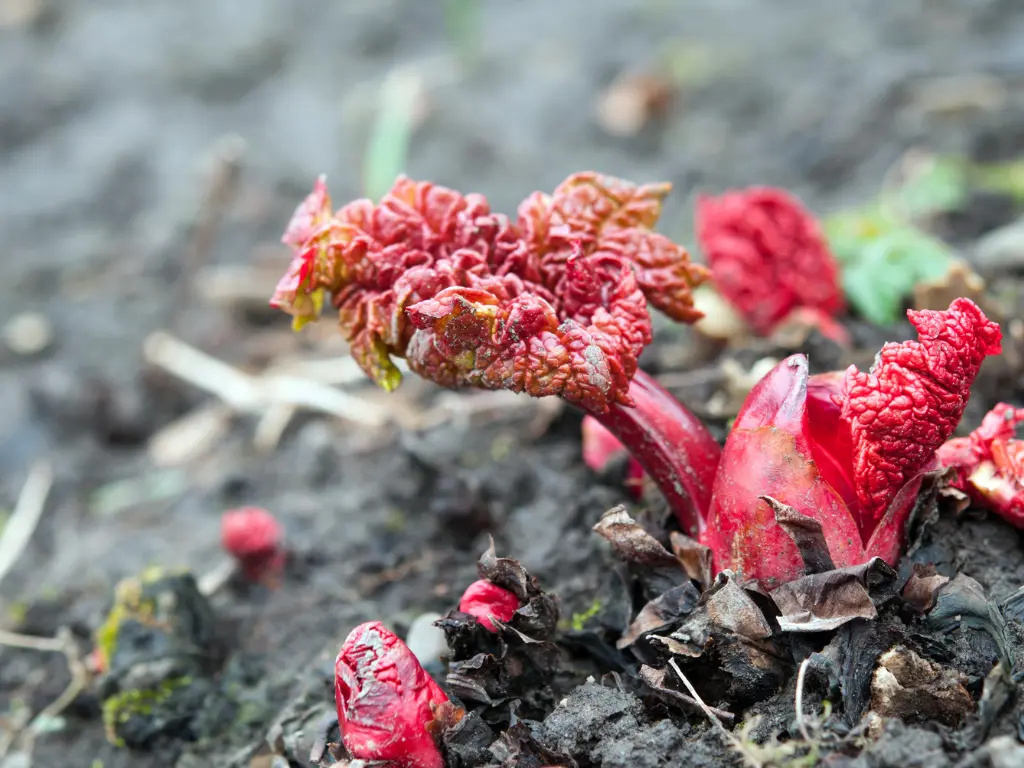
Common Mistakes to Avoid When Dividing Rhubarb
While dividing rhubarb is generally straightforward, there are a few common mistakes that gardeners should avoid to ensure the success of the process:
-
Dividing Too Late: Dividing rhubarb too late in the spring or during the growing season can stress the plant and reduce its ability to thrive. Stick to the recommended early spring or late fall timeline.
-
Failing to Choose Healthy Crowns: Only divide healthy rhubarb crowns. If the crown is diseased or weak, dividing it can lead to poor growth in the new plants. Look for crowns with strong, healthy roots and plenty of buds.
-
Not Using Clean Tools: Always use clean, sharp tools when dividing rhubarb to prevent the spread of diseases. Disinfecting your knives or pruning shears before use is a good practice.
-
Planting Too Deep or Too Shallow: When replanting the divisions, make sure they’re not planted too deep or too shallow. The buds should be just above the soil line. If planted too deep, the crown may rot; if planted too shallow, it may not establish roots properly.
Aftercare for Divided Rhubarb Plants
After dividing your rhubarb, it’s crucial to provide the right care to ensure the plants thrive. Here are a few tips:
-
Watering: Keep the soil evenly moist, especially during the first few weeks after planting the divisions. Rhubarb plants prefer consistent moisture but do not like to sit in waterlogged soil.
-
Fertilization: Rhubarb is a heavy feeder. After the first year, apply a balanced fertilizer in the spring to encourage strong growth. You can also add organic matter like compost or well-rotted manure to the soil.
-
Weeding: Keep the area around the rhubarb free of weeds, which can compete for nutrients and water.
-
Mulching: Apply a layer of mulch around the base of the plants to help retain moisture, suppress weeds, and regulate soil temperature.
Frequently Asked Questions (FAQs)
-
Can I divide rhubarb plants in summer?
-
It’s not recommended to divide rhubarb during the summer when the plant is actively growing. Dividing rhubarb during the growing season can stress the plant and negatively affect its health.
-
-
How often should I divide my rhubarb plants?
-
You should divide rhubarb plants every 4-5 years to keep them healthy and productive. Overcrowded plants may produce smaller stalks and fewer new shoots, signaling it’s time to divide.
-
-
Can I propagate rhubarb from seed?
-
While it’s possible to propagate rhubarb from seed, it’s a slow process, and the plants may not produce the same quality of stalks as the parent plant. Division is a faster and more reliable way to propagate rhubarb.
-
-
What should I do if my rhubarb plants aren’t growing well after being divided?
-
If your rhubarb isn’t growing well after division, check the soil conditions. Ensure it’s well-drained, rich in organic matter, and in a sunny spot. Also, make sure the plants are not overcrowded and that they are receiving enough water.
-
Conclusion
Dividing rhubarb plants is an essential gardening technique that ensures healthy growth, increased yields, and the ability to propagate new plants. By understanding the best time to split rhubarb and following the proper division methods, you can enjoy bountiful harvests for years to come. Remember to take care of your plants after the division to help them thrive, and you’ll be rewarded with robust, productive rhubarb plants in your garden.
If you’re looking to learn more about caring for your rhubarb plants or other gardening tips, check out our other helpful articles on garden care.
Read more:

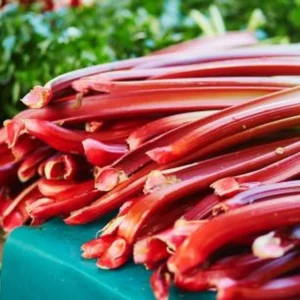 Red Rhubarb Plant - Set of 5 Live Roots for Planting - Edible Vegetable
Red Rhubarb Plant - Set of 5 Live Roots for Planting - Edible Vegetable 